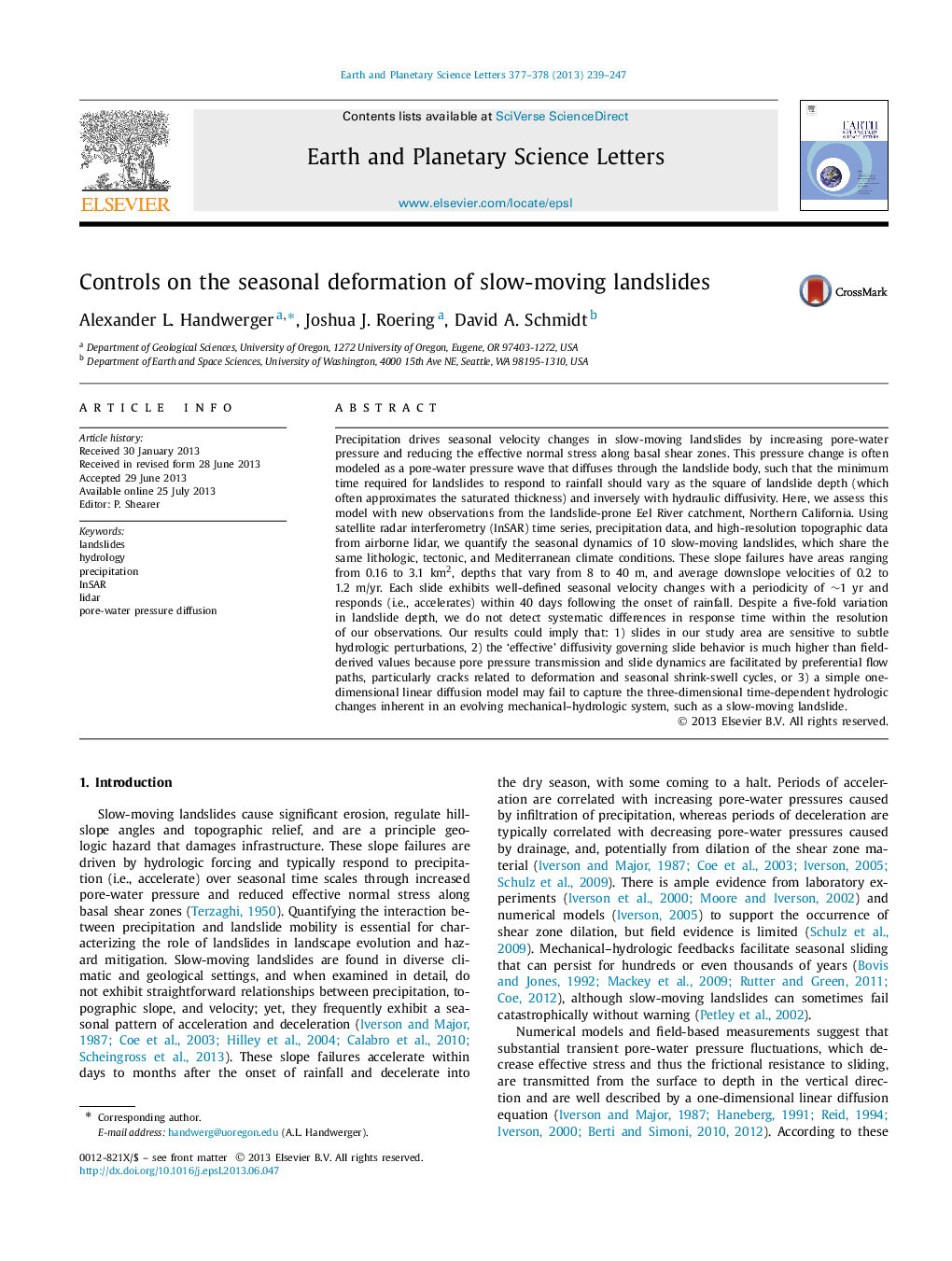| کد مقاله | کد نشریه | سال انتشار | مقاله انگلیسی | نسخه تمام متن |
|---|---|---|---|---|
| 6430020 | 1634778 | 2013 | 9 صفحه PDF | دانلود رایگان |
- Landslide velocities vary seasonally and lag onset of rainfall by 40 days.
- Velocity patterns are driven by precipitation-induced changes in pore-water pressure.
- Narrow range of response times belie substantial variation in landslide depth.
- Slides have self-organized to maintain a narrow range of pore-water pressures.
- Our observations challenge existing hydrologic models for landslides.
Precipitation drives seasonal velocity changes in slow-moving landslides by increasing pore-water pressure and reducing the effective normal stress along basal shear zones. This pressure change is often modeled as a pore-water pressure wave that diffuses through the landslide body, such that the minimum time required for landslides to respond to rainfall should vary as the square of landslide depth (which often approximates the saturated thickness) and inversely with hydraulic diffusivity. Here, we assess this model with new observations from the landslide-prone Eel River catchment, Northern California. Using satellite radar interferometry (InSAR) time series, precipitation data, and high-resolution topographic data from airborne lidar, we quantify the seasonal dynamics of 10 slow-moving landslides, which share the same lithologic, tectonic, and Mediterranean climate conditions. These slope failures have areas ranging from 0.16 to 3.1 km2, depths that vary from 8 to 40 m, and average downslope velocities of 0.2 to 1.2 m/yr. Each slide exhibits well-defined seasonal velocity changes with a periodicity of â¼1 yr and responds (i.e., accelerates) within 40 days following the onset of rainfall. Despite a five-fold variation in landslide depth, we do not detect systematic differences in response time within the resolution of our observations. Our results could imply that: 1) slides in our study area are sensitive to subtle hydrologic perturbations, 2) the 'effective' diffusivity governing slide behavior is much higher than field-derived values because pore pressure transmission and slide dynamics are facilitated by preferential flow paths, particularly cracks related to deformation and seasonal shrink-swell cycles, or 3) a simple one-dimensional linear diffusion model may fail to capture the three-dimensional time-dependent hydrologic changes inherent in an evolving mechanical-hydrologic system, such as a slow-moving landslide.
Journal: Earth and Planetary Science Letters - Volumes 377â378, September 2013, Pages 239-247
